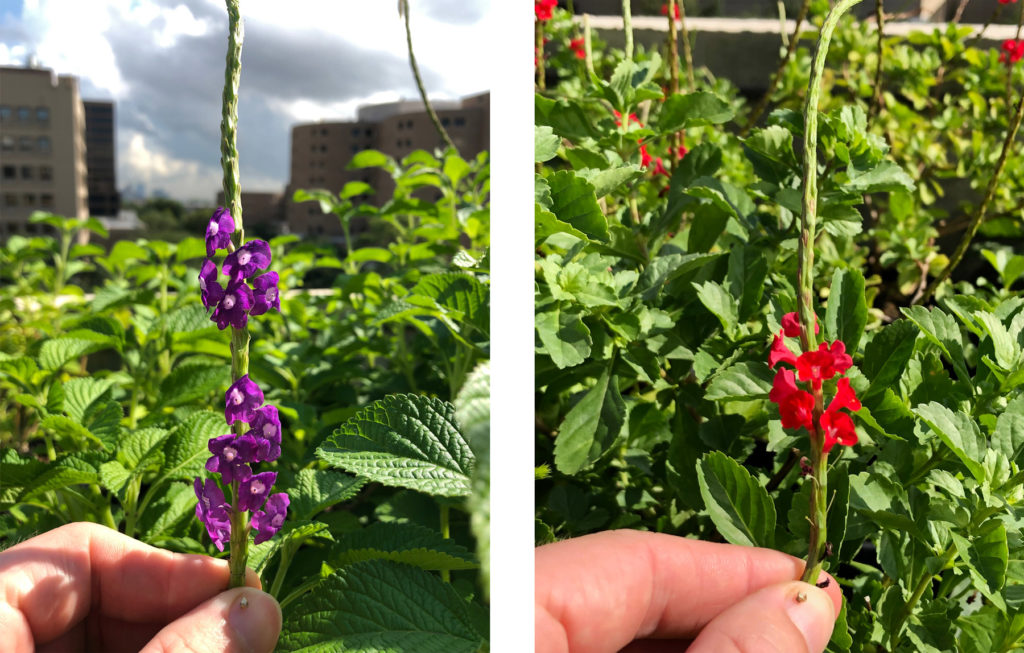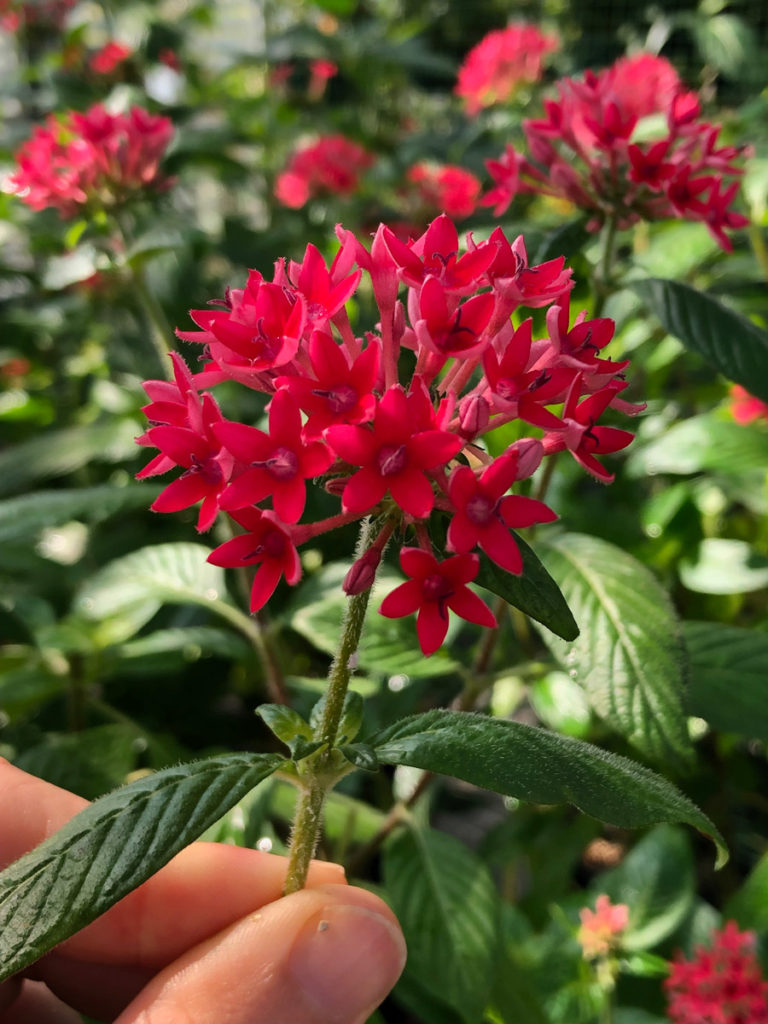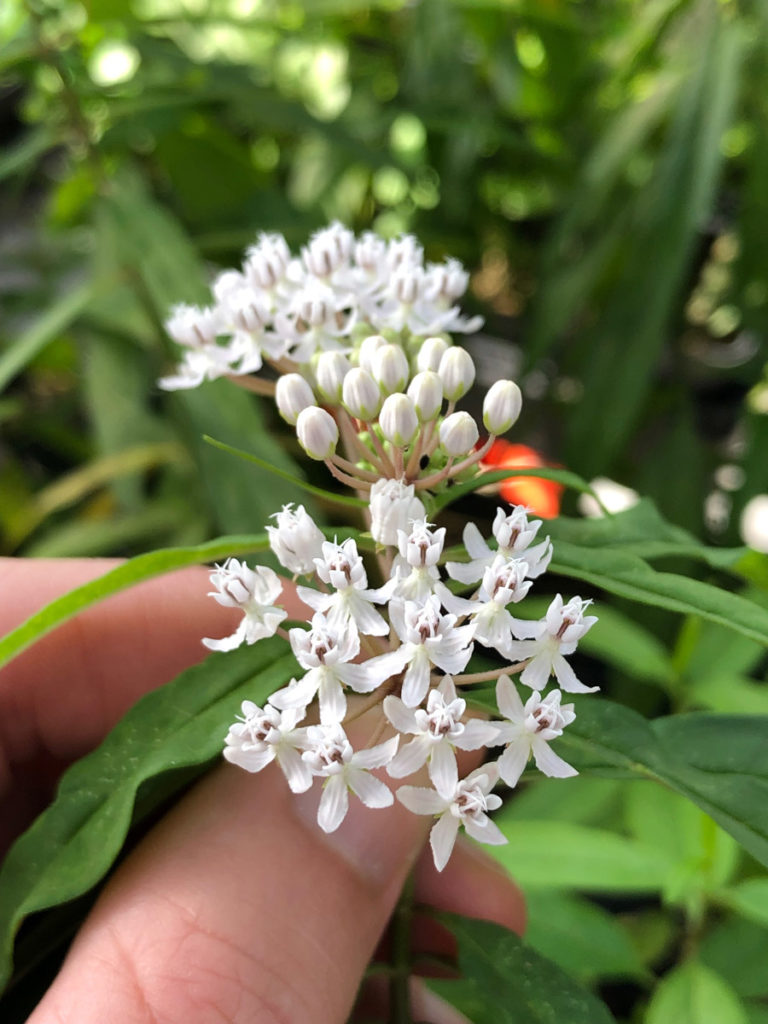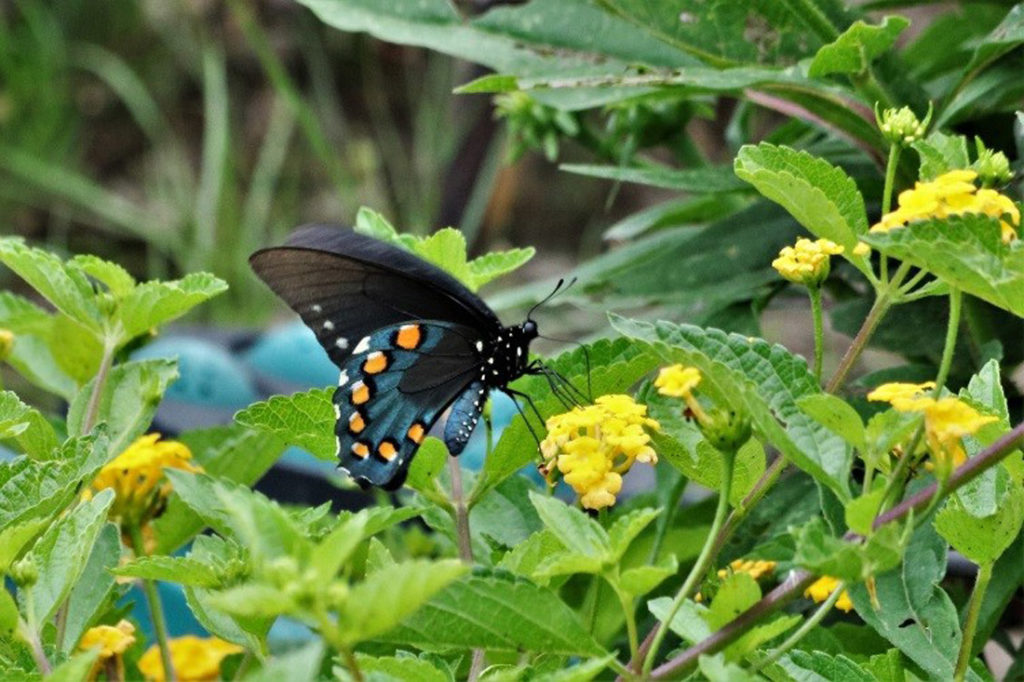The Cockrell Butterfly Center will hold its Fall Plant Sale September 28, but many of you may be new to gardening with no idea which plants to purchase. In order to create a butterfly garden there are two basic types of plants that you will need. Plants that produce flowers that provide the adult butterflies with nectar and host plants on which the adults will lay their eggs. Luckily the Butterfly Center provides both of these in one location as well as expert advice! No matter what size space you’re working with, from a tiny apartment balcony to a massive River Oaks estate, the addition of a few plants will make all the difference to Houston area butterflies and other pollinators. Here is a list of some perfect plants to spruce up your garden in time for fall.
Nectar Plants

Porterweeds (Stachytarpheta spp.) – There is probably no better nectar plant for Houston gardens than the porterweeds. They bloom all throughout the warmer months and are a lifesaver (literally) for butterflies, bees, and hummingbirds throughout the hottest part of the summer when most plants (and gardeners) tend to take a break. There is one that will fit into any size garden and even do well as potted plants. There are four types that will be sold at our Fall Plant Sale: the coral and purple which are large bushy plants that grow to about four feet tall and just as wide, and the blue and red types which tend to be a bit smaller at about one to two feet tall or so. Although more behaved in the garden, the red and blue types tend to be a little less tolerant to colder temperatures. They have a harder time recovering from a hard freeze, whereas the coral and purple porterweeds will regrow from their roots if they get knocked back by a cold snap. Most Houston winters are mild enough for all of them to remain through the winter with minimal damage. Nothing a good trim and fertilizing in the spring can’t fix. They do best in full sun to partial shade and are fairly drought tolerant once established.

Mistflower (Conoclinium greggii) – If attracting butterflies are your goal, then you must have some mistflowers (also called bonesets) in your garden somewhere. Gregg’s mistflower is a great one! Native to west Texas, it thrives in our wetter side of the state. It’s low growing and spreads to form a nice mound of attractive foliage when not in bloom. It will send up flowers off and on in spring and summer, but fall is really it’s time to shine. They’re in full bloom just in time for the annual monarch migration south and the butterflies come to it in droves.

Pentas (Pentas lanceolata) – Every garden needs at least one Pentas plant. These are a must have and are one of the most popular plants with butterflies! I am always seeing them fight over the Pentas in my garden. They come in several colors and sizes, but generally the taller “old fashioned” Pentas tend to be better nectar sources than the newer shorter varieties. These will survive all but the very coldest of winters and are not picky about location. I have them in very sunny spots as well as in total shade in my garden and notice no difference in their blooms. Pentas are unaffected by heat and require little in the way of additional water during dry spells.

Milkweeds (Asclepias spp.) – These are a “two for one” deal in the garden. They are, of course, the host for monarch butterflies (more on that later), but also they’re an invaluable nectar source for butterflies, bees, and even hummingbirds. The most common type seen in our area is the tropical milkweed, Asclepias curassavica, which is native to Mexico and Central/South America, but has naturalized in the Houston area. It does great in the garden or in pots and blooms red and yellow flowers all throughout the spring and summer. There are several native species that we sell as well. These can be a little tricky for the beginner, though, as they can be a bit finicky about planting and picky about where they grow. They’re definitely worth a shot once you feel a bit more confident in your gardening abilities. The aquatic milkweed, Asclepias perennis, is probably the best native species for Houston gardeners. It does best in part shade and enjoys moist conditions, but is surprisingly tolerant of drought considering its common name. Please note that the native milkweeds are the most popular plants at our plant sales and sell out quickly!
Host plants

Pivevines (Aristolochia spp.) – At every plant sale there is a mad rush when we first open for these plants and we always sell out. Brazilian pipevine, Aristolochia fimbriata, is the most common and best suited for Houston gardens. Despite the ‘vine’ in its name, it is not a climber, but rather it crawls along the ground as a groundcover. It’s an attractive plant with small heart-shaped leaves and white veins running through them. The flowers are not that showy, but rather strange looking because they’re pollinated by tiny flies that you’ll never see, so don’t worry about that. It is the host for the pipevine swallowtail, Battus philinor, which is one of the most beautiful of our native butterflies. There are native pipevines which are great plants, but these are hard to find in garden centers. Like the native milkweeds these can be slow to establish and a bit fussy, but are worth seeking out.

Passionvines (Passiflora spp.) – Gulf fritillaries, Agraulis vanilla, are probably one of the most common butterflies found in Houston area gardens. Their wings are orange with striking metallic silver spots on the undersides. To bring in the gulf frits you have to have at least one passionvine in your garden. There are many different species and hybrids available out there that come in all sorts of colors. Their flowers are exotic looking and need to be appreciated. Gulf frits aren’t too picky when it comes to which type to lay their eggs on, but seem to prefer the native species (obviously). They do well in pots so they’re suitable for apartment balconies or patios as long as they have something to climb. In the garden some of them send out runners (baby plants that sprout from the roots) so they can get a bit weedy if allowed to run amok, but they’re easy to pull if they pop up in a spot where you don’t want them. I have a vine I’ve allowed to get HUGE in my garden, climbing an old pecan tree and it is always abuzz with gulf frits. They’re fun to watch because the females are always fighting for the best spots to lay their eggs while the males are busy chasing off rivals.

Dill/Fennel – Black swallowtails, Papilio polyxenes, are gorgeous butterflies and are a good one for beginners who are just getting started in butterfly gardening. It’s pretty easy to tell a male from a female because males have yellow on their hindwings whereas females sport a lovely shade of blue. I see them off and on in my garden throughout the year and the females are always on the lookout for their host plants. They mostly lay on plants in the carrot family Apiaceae. Although, they will also lay on Rue and other plants in the citrus family. Dill and fennel seem to be their preferred hosts, and these are great to have in the garden because you can also get some culinary use out of them when not occupied by caterpillars.

Milkweeds (Asclepias spp.) – And we come back around to the milkweeds. I wrote a pretty detailed account of these plants last year, so check that out for everything you’ve ever wanted to know about them and their role as a keystone species in our ecosystems. Monarchs, Danaus plexippus, are the poster children of the butterfly world in North America because of their beauty and their annual migration to wintering grounds in Mexico. Their population is carefully monitored and thanks to a lot of dedicated people they’re doing well right now. You can help out too by planting one or several of these around your garden. No matter what conditions you’re dealing with there is a milkweed that can grow there. Milkweeds are also host to the monarch’s cousin called the queen butterfly, Danaus gilippus.
Now that you have the tools equipped for picking the best possible starter kit for your butterfly garden, join us for our semi-annual Plant Sale. Saturday, September 28, 2019 museum guests and plant enthusiasts will have the opportunity to take a little bit of the Butterfly Center home with them in order to create their own butterfly haven and participate in activities everyone can enjoy, such as roach races and up-close bug encounters. Keep an eye out on our website and blog for more plant sale opportunities. Happy planting!

